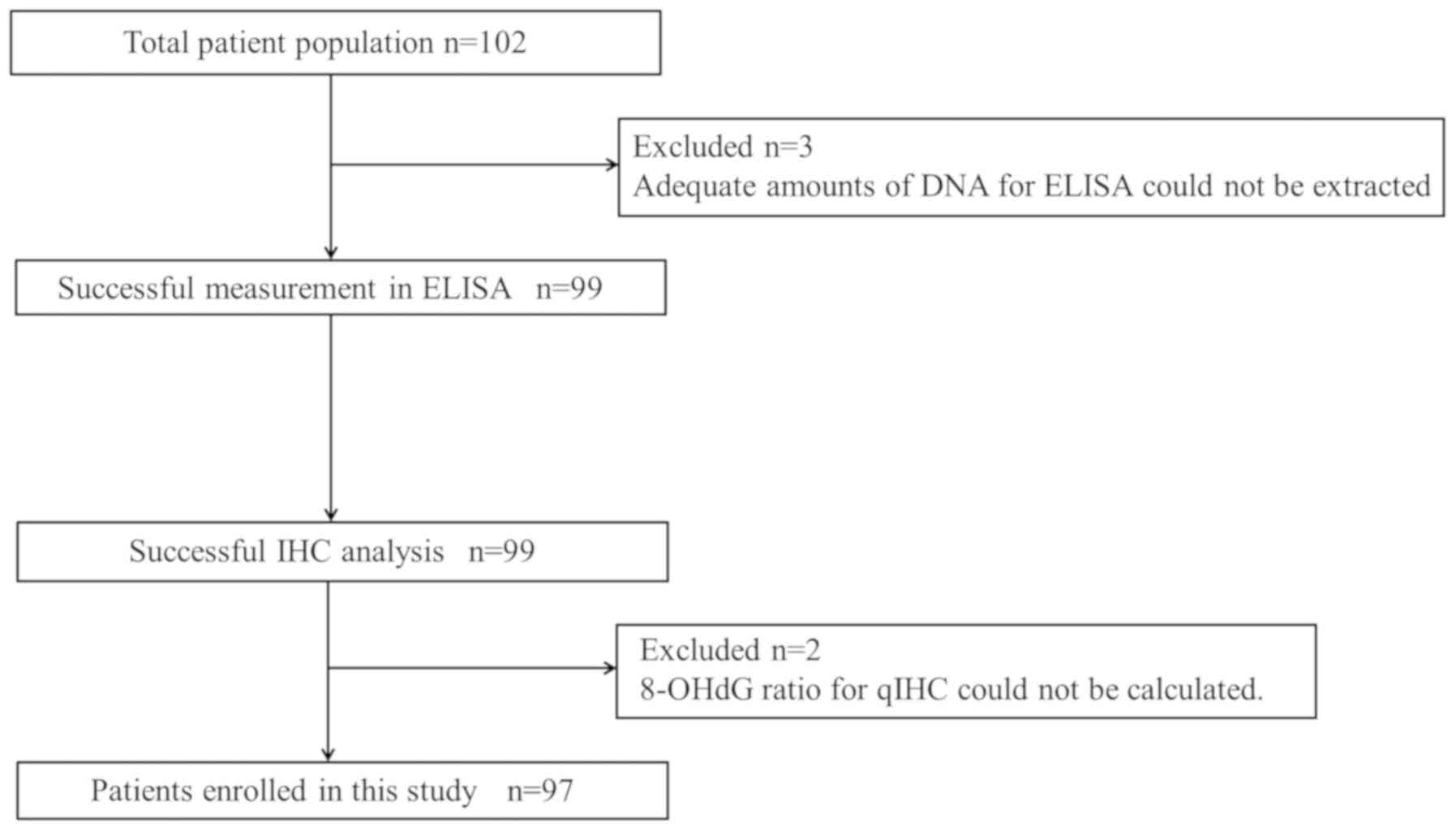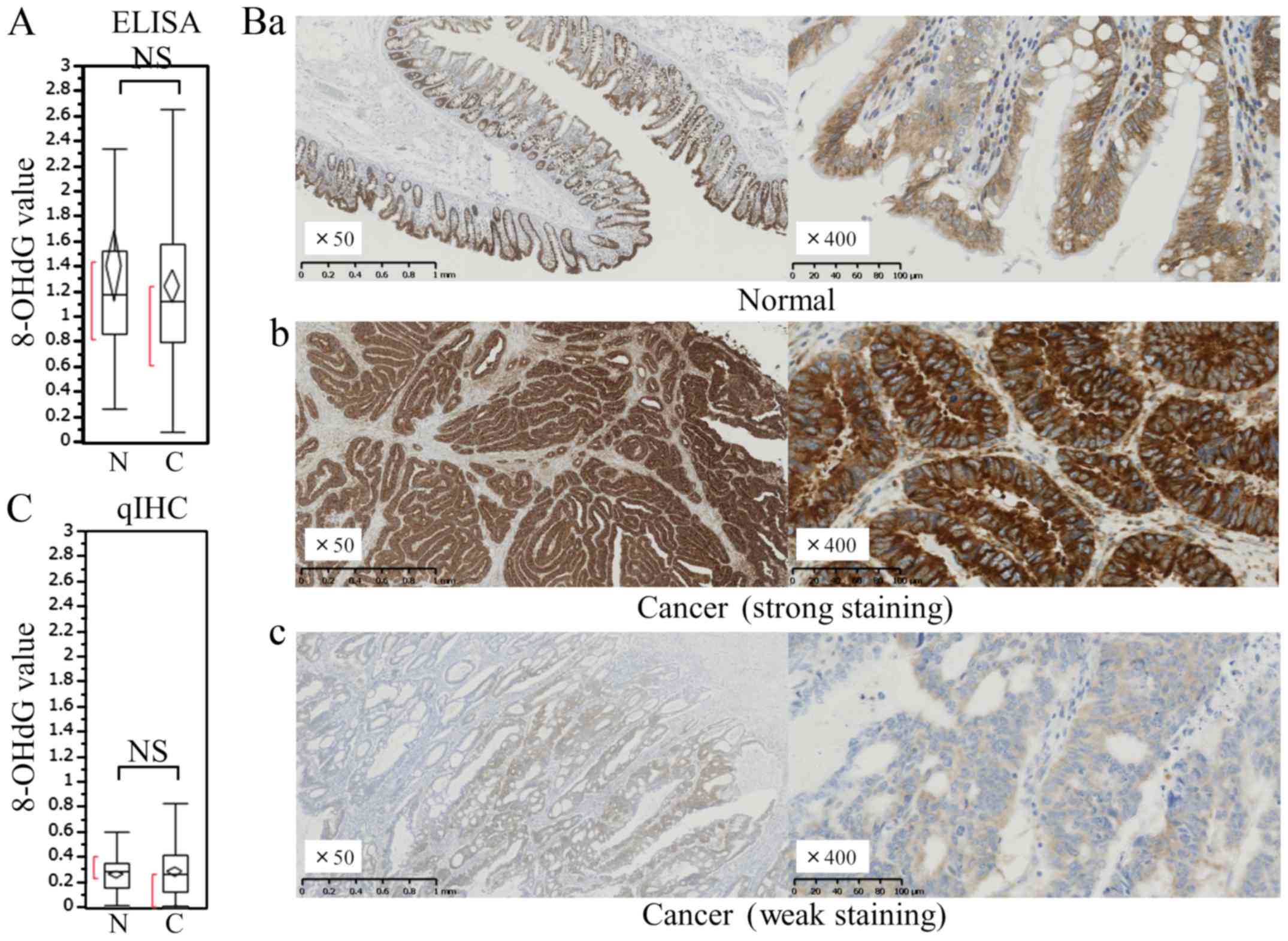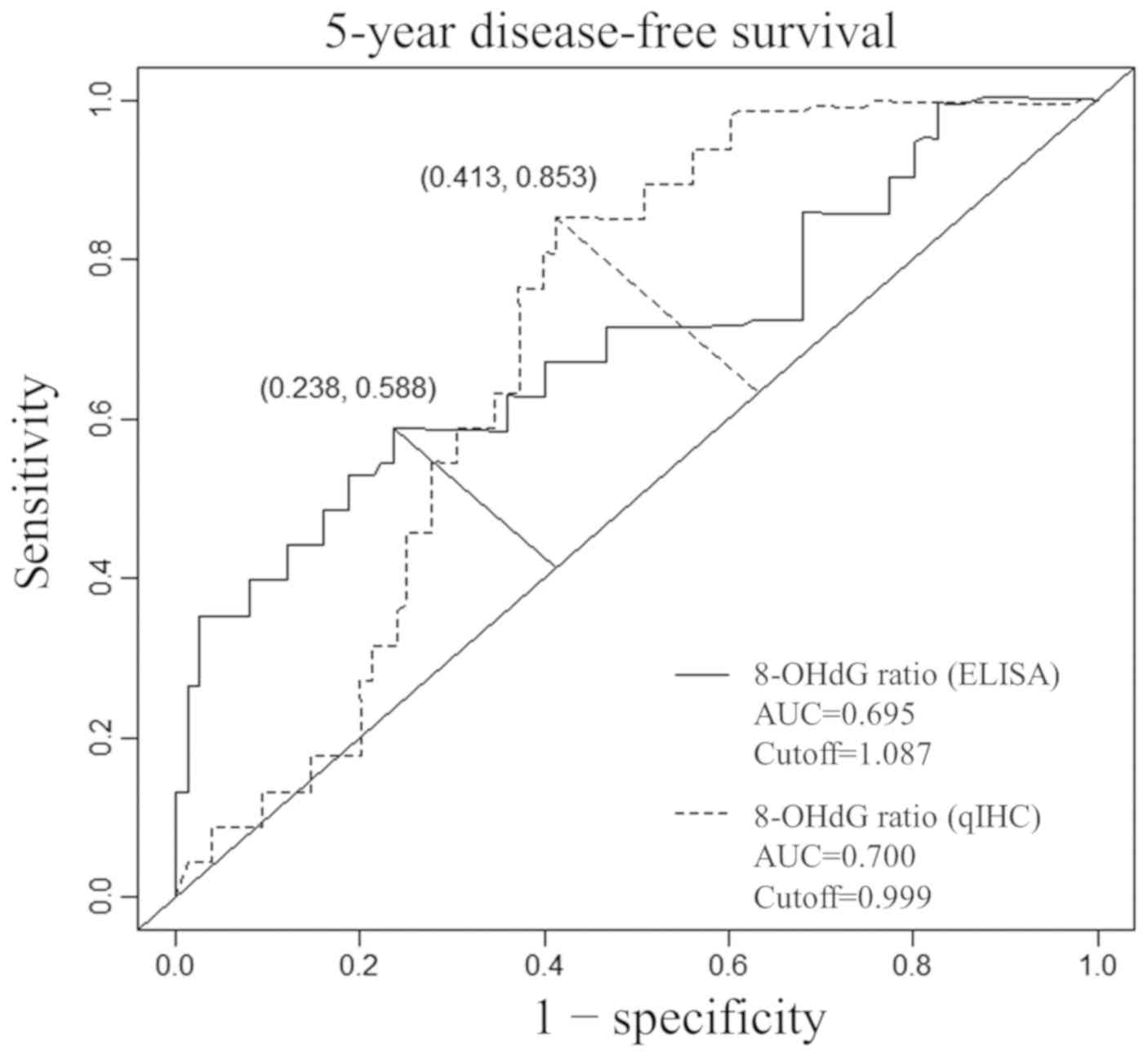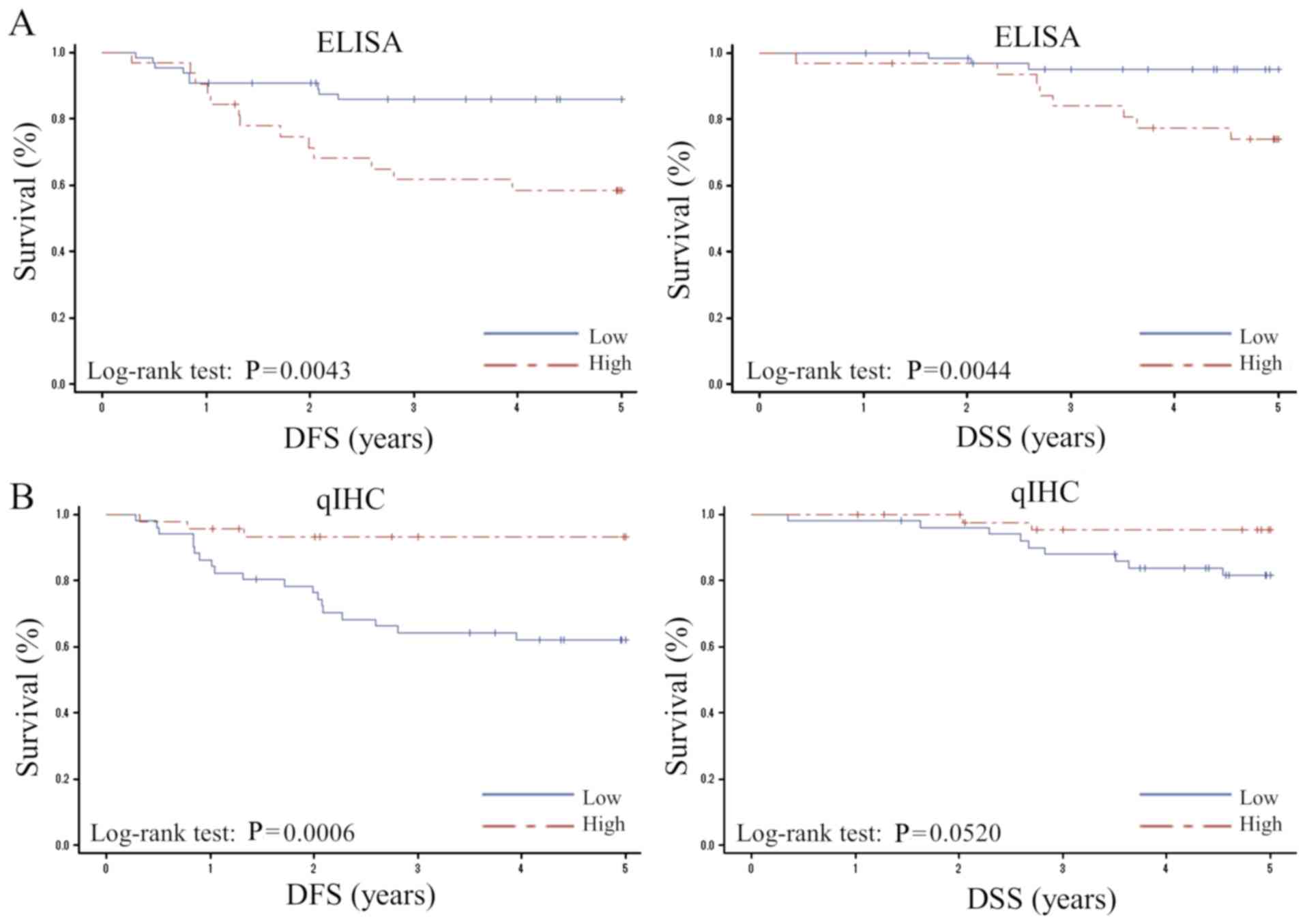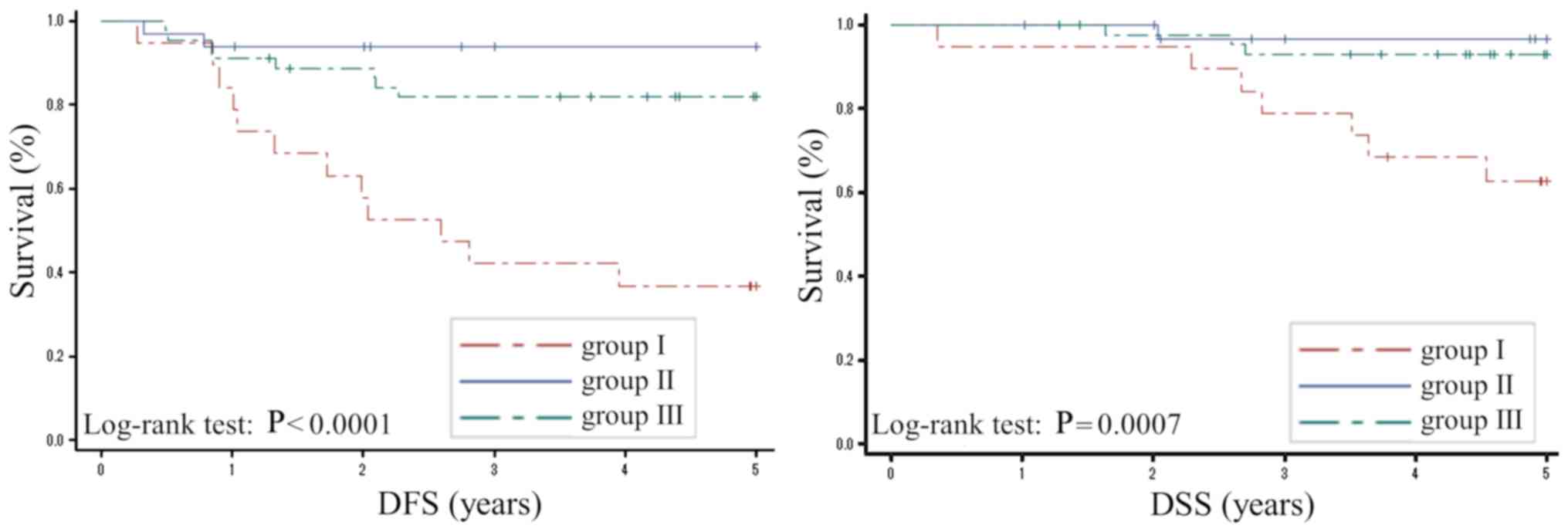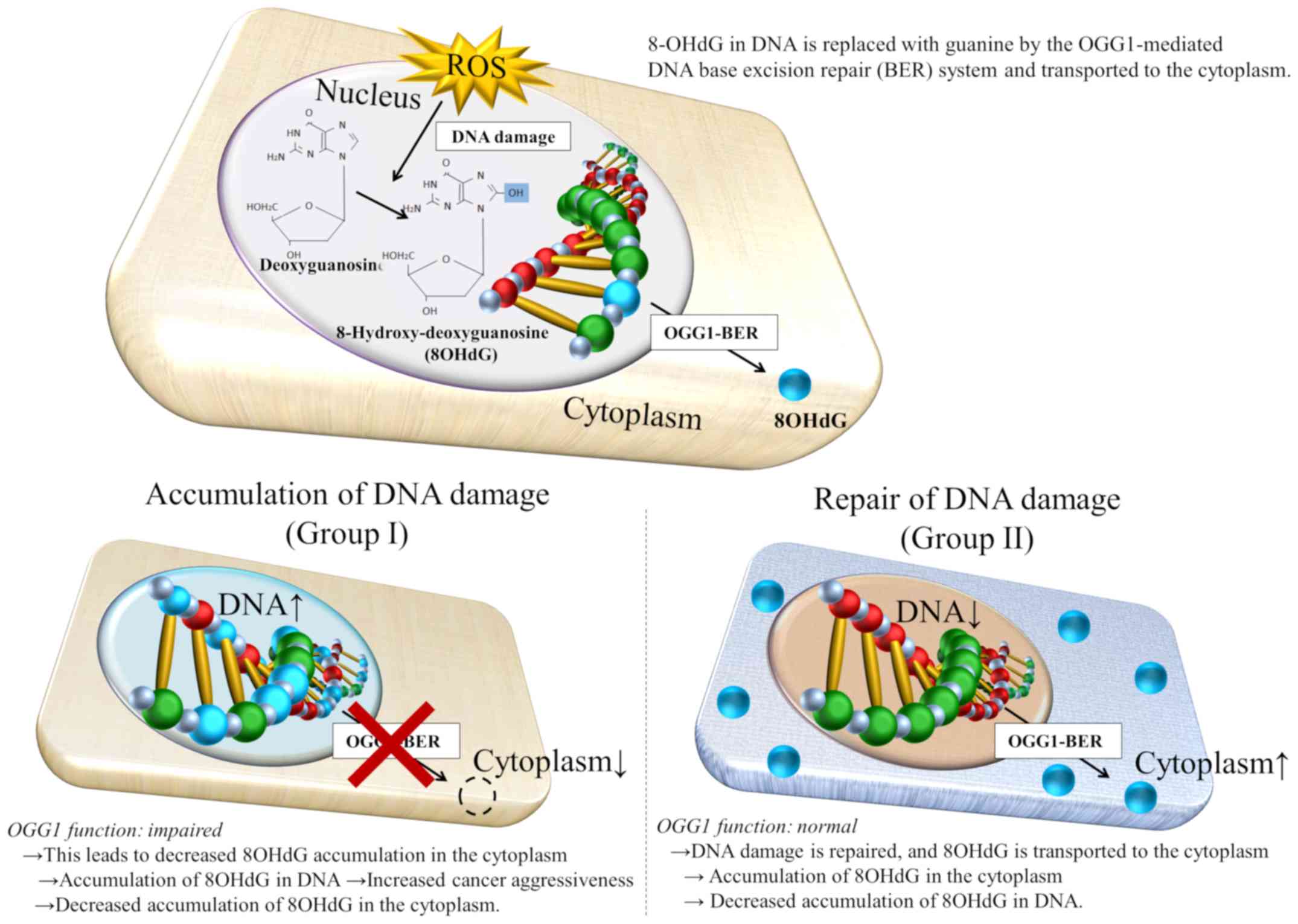|
1
|
Boring CC, Squires TS and Tong T: Cancer
statistics, 1993. CA Cancer J Clin. 43:7–26. 1993. View Article : Google Scholar : PubMed/NCBI
|
|
2
|
Prasad S, Gupta SC and Tyagi AK: Reactive
oxygen species (ROS) and cancer: Role of antioxidative
nutraceuticals. Cancer Lett. 387:95–105. 2017. View Article : Google Scholar : PubMed/NCBI
|
|
3
|
Acharya A, Das I, Chandhok D and Saha T:
Redox regulation in cancer: A double-edged sword with therapeutic
potential. Oxid Med Cell Longev. 3:23–34. 2010. View Article : Google Scholar : PubMed/NCBI
|
|
4
|
Yang W, Zou L, Huang C and Lei Y: Redox
regulation of cancer metastasis: Molecular signaling and
therapeutic opportunities. Drug Dev Res. 75:331–341. 2014.
View Article : Google Scholar : PubMed/NCBI
|
|
5
|
Tochhawng L, Deng S, Pervaiz S and Yap CT:
Redox regulation of cancer cell migration and invasion.
Mitochondrion. 13:246–253. 2013. View Article : Google Scholar : PubMed/NCBI
|
|
6
|
Sena LA and Chandel NS: Physiological
roles of mitochondrial reactive oxygen species. Mol Cell.
48:158–167. 2012. View Article : Google Scholar : PubMed/NCBI
|
|
7
|
Tanaka T, Kitajima Y, Miyake S, Yanagihara
K, Hara H, Nishijima-Matsunobu A, Baba K, Shida M, Wakiyama K,
Nakamura J, et al: The apoptotic effect of HIF-1α inhibition
combined with glucose plus insulin treatment on gastric cancer
under hypoxic conditions. PLoS One. 10:e01372572015. View Article : Google Scholar : PubMed/NCBI
|
|
8
|
Kamino H, Nakamura Y, Tsuneki M, Sano H,
Miyamoto Y, Kitamura N, Futamura M, Kanai Y, Taniguchi H, Shida D,
et al: Mieap-regulated mitochondrial quality control is frequently
inactiveated in human colorectal cancer. OncogenesisJan.
5:e1812016. View Article : Google Scholar
|
|
9
|
Levi F, Pasche C, La Vecchia C, Lucchini F
and Franceschi S: Food groups and colorectal cancer risk. Br J
Cancer. 79:1283–1287. 1999. View Article : Google Scholar : PubMed/NCBI
|
|
10
|
Azeem S, Gillani SW, Siddiqui A,
Jandrajupalli SB, Poh V and Syed Sulaiman SA: Diet and colorectal
cancer risk in Asia - a systemic review. Asian Pac J Cancer Prev.
16:5389–5396. 2015. View Article : Google Scholar : PubMed/NCBI
|
|
11
|
Ray PD, Huang BW and Tsuji Y: Reactive
oxygen species (ROS) homeostasis and redox regulation in cellular
signaling. Cell Signal. 24:981–990. 2012. View Article : Google Scholar : PubMed/NCBI
|
|
12
|
Kryston TB, Georgiev AB, Pissis P and
Georgakilas AG: Role of oxidative stress and DNA damage in human
carcinogenesis. Mutat Res. 711:193–201. 2011. View Article : Google Scholar : PubMed/NCBI
|
|
13
|
Lin X, Zheng W, Liu J, Zhang Y, Qin H, Wu
H, Xue B, Lu Y and Shen P: Oxidative stress in malignant melanoma
enhances tumor necrosis factor-α secretion of tumor-associated
macrophages that promote cancer cell invasion. Antioxid Redox
Signal. 19:1337–1355. 2013. View Article : Google Scholar : PubMed/NCBI
|
|
14
|
Wartenberg M, Budde P, De Mareés M,
Grünheck F, Tsang SY, Huang Y, Chen ZY, Hescheler J and Sauer H:
Inhibition of tumor-induced angiogenesis and
matrix-metalloproteinase expression in confrontation cultures of
embryoid bodies and tumor spheroids by plant ingredients used in
traditional chinese medicine. Lab Invest. 83:87–98. 2003.
View Article : Google Scholar : PubMed/NCBI
|
|
15
|
Valko M, Izakovic M, Mazur M, Rhodes CJ
and Telser J: Role of oxygen radicals in DNA damage and cancer
incidence. Mol Cell Biochem. 266:37–56. 2004. View Article : Google Scholar : PubMed/NCBI
|
|
16
|
Nakabeppu Y: Cellular levels of
8-oxoguanine in either DNA or the nucleotide pool play pivotal
roles in carcinogenesis and survival of cancer cells. Int J Mol
Sci. 15:12543–12557. 2014. View Article : Google Scholar : PubMed/NCBI
|
|
17
|
Wu LL, Chiou CC, Chang PY and Wu JT:
Urinary 8-OHdG: A marker of oxidative stress to DNA and a risk
factor for cancer, atherosclerosis and diabetics. Clin Chim Acta.
339:1–9. 2004. View Article : Google Scholar : PubMed/NCBI
|
|
18
|
Xu X, Wang Y, Guo W, Zhou Y, Lv C, Chen X
and Liu K: The significance of the alteration of 8-OHdG in serous
ovarian carcinoma. J Ovarian Res. 6:742013. View Article : Google Scholar : PubMed/NCBI
|
|
19
|
Sato T, Takeda H, Otake S, Yokozawa J,
Nishise S, Fujishima S, Orii T, Fukui T, Takano J, Sasaki Y, et al:
Increased plasma levels of 8-hydroxydeoxyguanosine are associated
with development of colorectal tumors. J Clin Biochem Nutr.
47:59–63. 2010. View Article : Google Scholar : PubMed/NCBI
|
|
20
|
Dincer Y, Himmetoglu S, Akcay T, Ersoy EY,
Gunes KN and Tortum O: Prognostic significances of oxidative DNA
damage evaluated by 8-hydroxy-deoxyguanosine and antioxidant
enzymes in patients undergoing resection of gastric and colon
carcinoma. Neoplasma. 54:131–136. 2007.PubMed/NCBI
|
|
21
|
Płachetka A, Adamek B, Strzelczyk JK,
Krakowczyk Ł, Migula P, Nowak P and Wiczkowski A:
8-hydroxy-2′-deoxyguanosine in colorectal adenocarcinoma--is it a
result of oxidative stress? Med Sci Monit. 19:690–695. 2013.
View Article : Google Scholar : PubMed/NCBI
|
|
22
|
Kaneko T, Tahara S and Matsuo M:
Non-linear accumulation of 8-hydroxy-2′-deoxyguanosine, a marker of
oxidized DNA damage, during aging. Mutat Res. 316:277–285. 1996.
View Article : Google Scholar : PubMed/NCBI
|
|
23
|
Shigenaga MK, Hagen TM and Ames BN:
Oxidative damage and mitochondrial decay in aging. Proc Natl Acad
Sci USA. 91:10771–10778. 1994. View Article : Google Scholar : PubMed/NCBI
|
|
24
|
Leanderson P and Tagesson C: Cigarette
smoke-induced DNA damage in cultured human lung cells: Role of
hydroxyl radicals and endonuclease activation. Chem Biol Interact.
81:197–208. 1992. View Article : Google Scholar : PubMed/NCBI
|
|
25
|
Nishikawa T, Sasahara T, Kiritoshi S,
Sonoda K, Senokuchi T, Matsuo T, Kukidome D, Wake N, Matsumura T,
Miyamura N, et al: Evaluation of urinary 8-hydroxydeoxy-guanosine
as a novel biomarker of macrovascular complications in type 2
diabetes. Diabetes Care. 26:1507–1512. 2003. View Article : Google Scholar : PubMed/NCBI
|
|
26
|
Glei M, Latunde-Dada GO, Klinder A, Becker
TW, Hermann U, Voigt K and Pool-Zobel BL: Iron-overload induces
oxidative DNA damage in the human colon carcinoma cell line HT29
clone 19A. Mutat Res. 519:151–161. 2002. View Article : Google Scholar : PubMed/NCBI
|
|
27
|
Fearon ER and Vogelstein B: A genetic
model for colorectal tumorigenesis. Cell. 61:759–767. 1990.
View Article : Google Scholar : PubMed/NCBI
|
|
28
|
Sova H, Jukkola-Vuorinen A, Puistola U,
Kauppila S and Karihtala P: 8-Hydroxydeoxyguanosine: A new
potential independent prognostic factor in breast cancer. Br J
Cancer. 102:1018–1023. 2010. View Article : Google Scholar : PubMed/NCBI
|
|
29
|
Boiteux S and Radicella JP: Base excision
repair of 8-hydroxyguanine protects DNA from endogenous oxidative
stress. Biochimie. 81:59–67. 1999. View Article : Google Scholar : PubMed/NCBI
|
|
30
|
Gackowski D, Speina E, Zielinska M,
Kowalewski J, Rozalski R, Siomek A, Paciorek T, Tudek B and Olinski
R: Products of oxidative DNA damage and repair as possible
biomarkers of susceptibility to lung cancer. Cancer Res.
63:4899–4902. 2003.PubMed/NCBI
|
|
31
|
Paz-Elizur T, Ben-Yosef R, Elinger D,
Vexler A, Krupsky M, Berrebi A, Shani A, Schechtman E, Freedman L
and Livneh Z: Reduced repair of the oxidative 8-oxoguanine DNA
damage and risk of head and neck cancer. Cancer Res.
66:11683–11689. 2006. View Article : Google Scholar : PubMed/NCBI
|
|
32
|
Kondo S, Toyokuni S, Tanaka T, Hiai H,
Onodera H, Kasai H and Imamura M: Overexpression of the hOGG1 gene
and high 8-hydroxy-2′-deoxyguanosine (8-OHdG) lyase activity in
human colorectal carcinoma: Regulation mechanism of the 8-OHdG
level in DNA. Clin Cancer Res. 6:1394–1400. 2000.PubMed/NCBI
|















